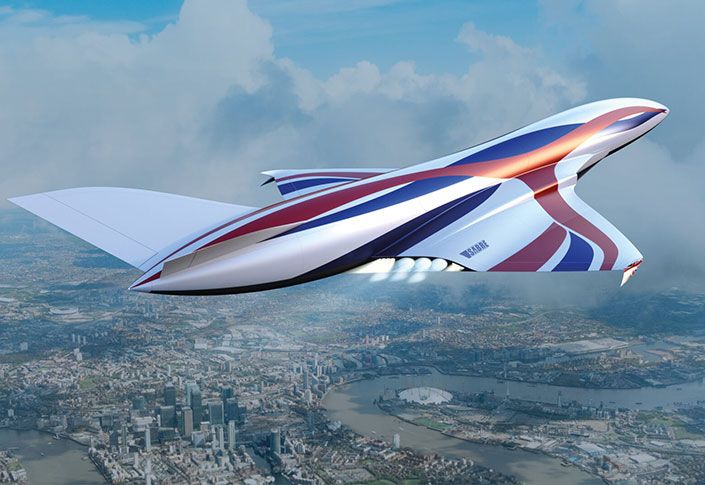Where travel agents earn, learn and save!
News / New York to London in 1 hour? This company says it’s possible
An air-breathing rocket engine offering Mach 5 speeds

March 24 - New York to London in one hour? Sydney to London in four hours? It might sound like an expensive pipedream, but the UK Space Agency reckons it is possible. The government agency has been teaming up with private companies to explore new territory in low-orbit space and hypersonic travel. One of those partner companies is developing an engine that the UK Space Agency thinks might make a day trip to London from Australia a reality.
An air-breathing rocket engine offering Mach 5 speeds
Two years ago, the UK Space Agency floated the idea of hypersonic travel after a collaboration with Oxford-based Reaction Engines produced promising results. Reaction Engines is working on a propulsion system called SABRE, which they describe as an “air-breathing rocket engine that can propel an aircraft from zero to five times the speed of sound in the atmosphere.” Reaction Engines says it has the potential to redefine travel.
“When we have brought the SABRE rocket engine to fruition, that may enable us to get to Australia in perhaps as little as four hours,” said the UK Space Agency’s Graham Turner at a conference in 2019.
“This is a technology that could definitely deliver that. We’re talking the 2030s for operational service, and the work is already very advanced.”
At the time, both Reaction Engines and the UK Space Agency were celebrating successful precooler tests. What’s a precooler? Glad you asked. A precooler is the part of the SABRE engine that rapidly cools the incoming air (1,000 °C to ambient), enabling the engine to operate at higher speeds than existing engines. Reaction’s SABRE precooler works fine for speeds of up to Mach 3.3. That’s a lot faster than those old British Airways and Air France Concordes.
 Reaction Engines
Reaction Engines
What the current status of the SABRE engine?
So, what’s happened since 2019? To start with, the SABRE precooler has since been validated for speeds of up to Mach 5 in the earth’s atmosphere. The precooler is one of three critical elements of the SABRE engine. Also vital are the engine core and the thrust chamber. They are undergoing testing and validation using ground-based demonstrations, which saves cost and time relative to flight tests.
Reaction Engines has recently been finishing the testing of two important sub-systems of SABRE – the HX3 heat exchanger and the advanced hydrogen preburner. The hydrogen preburner provides heat energy to the engine cycle at take-off and early flight. The HX3 is a microtube heat exchanger that connects to the preburner and exchanges heat between combustion gas and helium.
The HX3 achieved a top temperature of 1126℃, making it Reaction Engines’ hottest test to date. Similarly, the preburner exceeded expectations during testing.
 Reaction Engines
Reaction Engines
Just how likely is this to happen?
It sounds like a tonne of fun for these smart Oxford rocket scientists, but does it leave Alan Joyce’s Project Sunrise dead in the water before he even orders his first A350? Should JetBlue give up on Heathrow before it services its first transatlantic inflight canape?
The short answer is no – at least not in the short to medium term. The UK Space Agency and Reaction Engines join a conga line of clever companies developing supersonic and hypersonic engines with commercial aircraft applications. Here at Simple Flying, they’ve recently talked about Aerion’s AS2 12 supersonic passenger aircraft, Boom Supersonic, and the Spike S-512 business jet.
They all look promising, and most have fat pools of funding behind them. This signifies both interest and a degree of confidence in the potential of supersonic and hypersonic travel. But even if any of these companies manage to get a plane in the air, there’s a long way to go before passengers start paying to fly in them.
This suggests it will take eight hours to fly from New York to London and a grueling 21 hours to fly from Sydney to London for a while yet. Depending on how much you like flying, that’s either a good or bad thing.
More Travel News:
Governments join sector leaders in backing principles for international code to protect Tourists
Saint Lucia prepares to welcome Cruise Tourism this summer
Interjet to request commercial bankruptcy by March 30
Diego Ortiz joins Sandos Hotels & Resorts as Director of E-Commerce Mexico








